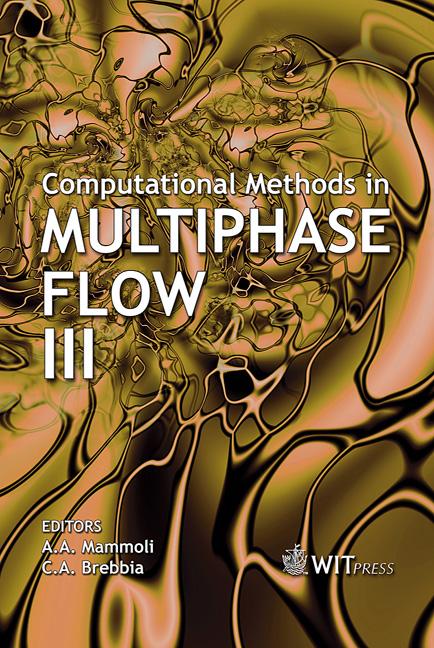A Fixed Coarse-grid Thermal-fluid Scheme And A Heat Conduction Scheme In The Distinct Element Method
Price
Free (open access)
Transaction
Volume
50
Pages
10
Published
2005
Size
3,061 kb
Paper DOI
10.2495/MPF050221
Copyright
WIT Press
Author(s)
Y. Shimizu
Abstract
A particle-thermal-fluid coupling scheme with a mixed Lagrangian-Eulerian approach is described by extending the author’s previous research (Shimizu, 2004). The scheme solves the continuity, Navier-Stokes (N-S) and thermal energy equations numerically in Eulerian Cartesian coordinates by considering the existence of particles within the cell. On the other hand, in the Distinct Element Method (DEM), driving forces and thermal energy applies to the particles. Keywords: particle-thermal-fluid coupling, mixed Lagrangian-Eulerian approach, distinct element method. 1 Introduction Numerical analysis of particle-fluid coupling using a mixed Lagrangian-Eulerian approach is becoming popular, especially in the chemical and mechanical engineering fields [5,6,8]. Also, this approach has many potential applications in the geo-engineering field especially when there is a wide range of fluid velocity and high porosity [7]. In this scheme, the fluid phase is described by using the continuity and momentum (Navier–Stokes) equations to calculate pressure and velocity of fluid, while the movement of the solid phase (particles) is traced by the DEM as a Lagrangian method. Momentum exchange between particles and fluid is considered in the momentum equation for the fluid phase and in the force-displacement law for the solid phase. Here, we extend the mixed Lagrangian-Eulerian approach to include the thermal energy equation to solve for temperature in both fluid and particles. A correlation of forced convection heat transfer by considering particle existence is used for interaction term
Keywords
particle-thermal-fluid coupling, mixed Lagrangian-Eulerian approach, distinct element method.





